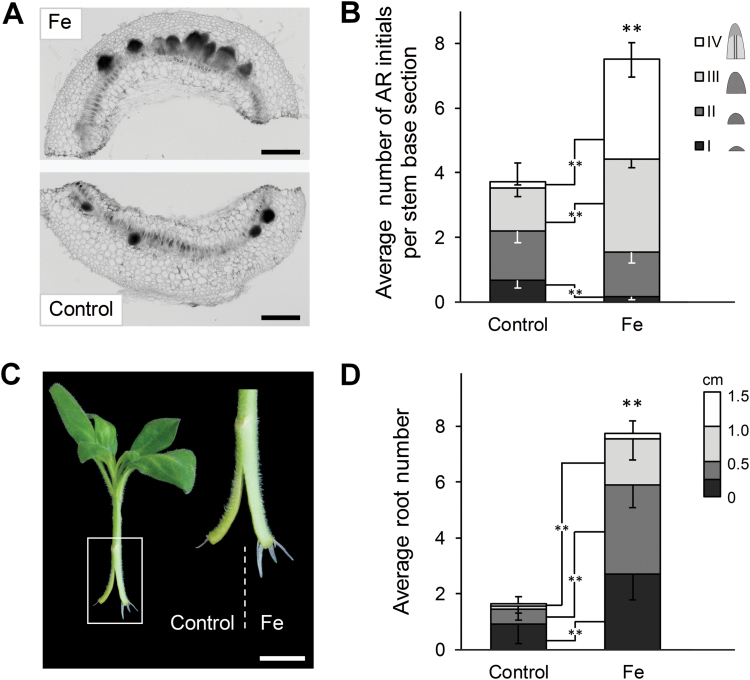Fig. 8.
Effect of local iron supply on adventitious root (AR) formation in split-shoot cuttings of Petunia hybrida. Shoot cuttings were split at the stem base and one half was grown without nutrients (control), while the other was grown in presence of 10 µM Fe-EDTA. (A) Representative image of a cross-section through the rooting zone of the split-shoot cutting 6 d post excision (dpe). Scale bar, 500 µm. (B) Quantitative assessment of AR formation 6 dpe. Developing AR initials in 100 µm cross-sections of the rooting zone were divided into 4 classes: I, meristemoids; II, globular meristems; III, AR primordia with dome-shaped meristems; IV, AR primordia with elongated cells and developing vasculature. Bars represent means−SE of each of the defined AR initial classes from 16 independent replicates. The total number of AR initials is represented by the size of the stacked columns +SE. Significant differences from control treatments in the number of specific AR initials in a given class are indicated by asterisks (t-test, **P<0.01). (C) Representative image of the rooted cutting 14 dpe. (D) Average number of ARs 14 dpe. Bars represent means−SE of each of the defined AR length classes from 24 independent replicates. The total number of ARs is represented by the size of the stacked columns +SE. Significant differences from control treatments in the number of specific AR initials in a given length class are indicated by asterisks (t-test, **P<0.01). Scale bar, 1 cm.

